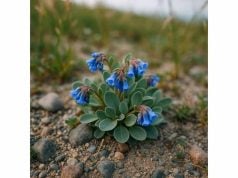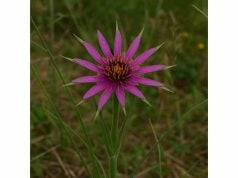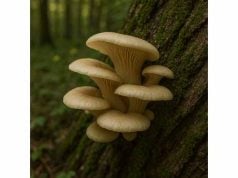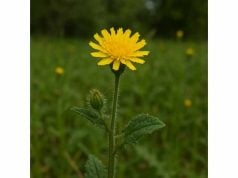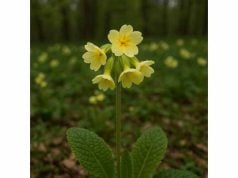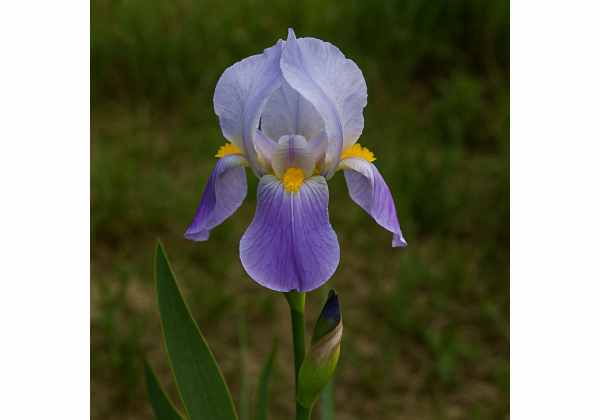
Orris Root is a prized botanical derived from the dried rhizomes of certain iris species, most notably Iris germanica and Iris florentina. Revered in both traditional herbal medicine and modern perfumery, it is celebrated for its unique aromatic qualities and a wealth of health benefits. Rich in active compounds such as irones, flavonoids, and essential oils, Orris Root is known to support anti-inflammatory, antioxidant, and digestive functions. Traditionally, it has been used to soothe respiratory discomfort, promote wound healing, and as a natural fixative in aromatic 4remedies. Discover its multifaceted applications in this comprehensive exploration of its botanical, chemical, and therapeutic dimensions.
Table of Contents
- Botanical Characteristics and Identification
- Phytochemical Profile and Active Compounds
- Therapeutic Benefits and Core Properties
- Practical Uses and Safety Guidelines
- Scientific Research and Key Findings
- Frequently Asked Questions
Botanical Characteristics and Identification
Orris Root is obtained from the rhizomes of specific iris species, predominantly Iris germanica, Iris florentina, and related cultivars. These species belong to the Iridaceae family and are renowned for their elegant, sword-shaped foliage and vibrant blooms. The roots, once dried and aged, develop a distinct, sweet, and powdery aroma that is highly valued in perfumery and traditional herbal applications.
Taxonomy and Distribution
Within the botanical taxonomy, Orris Root is classified under the genus Iris, which comprises over 200 species worldwide. Historically, the cultivation of iris species for their roots dates back centuries in Europe, particularly in Italy and France, where the plant was revered not only for its ornamental beauty but also for its medicinal and aromatic properties. Today, commercial cultivation of these irises is widespread in regions with temperate climates, where conditions are optimal for the growth of robust, fibrous rhizomes.
Morphological Features
The iris plant features long, strap-like leaves that emerge from a central rhizome. These leaves are typically bright green, with a glossy texture that captures sunlight efficiently, contributing to vigorous growth. The striking flowers, often in shades of purple, blue, or white, are borne on tall, graceful stems that elevate the plant’s natural beauty. However, it is the root—thick, fibrous, and aromatic—that is harvested after several years of growth. The drying process transforms these roots into a highly fragrant material known as Orris Root, prized for its fixative properties and subtle, powdery scent.
Growth Conditions and Cultivation
Orris-producing irises thrive in well-drained soils under full sun to partial shade. They are adaptable plants that prefer a moderate climate with a cool winter period to encourage dormancy and subsequent vigorous growth. Propagation is generally achieved through division of the rhizomes, a method that ensures genetic consistency and robust plant development. Once established, these plants require minimal care, making them a popular choice for sustainable ornamental gardening. The slow maturation of the rhizomes—often requiring three to five years before harvest—ensures a high concentration of the aromatic compounds that define quality Orris Root.
Historical and Cultural Significance
Historically, Orris Root has held a revered place in European herbal medicine and perfumery. Its use can be traced back to Renaissance apothecaries, where it was integrated into formulations for its purported healing properties. Traditional healers used Orris Root in decoctions to alleviate respiratory ailments, digestive disturbances, and skin conditions. In addition, its unique aroma made it a valued component in incense and potpourri, symbolizing purity and refinement. The cultural legacy of Orris Root is further enhanced by its aesthetic appeal; its delicate scent and visual association with the elegant iris flower have made it a staple in luxury fragrances and herbal remedies alike.
Modern Relevance
In contemporary applications, Orris Root continues to be an essential ingredient in high-end perfumery, providing a lasting base note that stabilizes and enriches more volatile fragrances. Meanwhile, herbalists and natural health practitioners are rediscovering its therapeutic potential. With growing interest in natural remedies, Orris Root is being studied for its anti-inflammatory, antioxidant, and antimicrobial properties. As research advances, its traditional uses are being validated and integrated into modern natural health practices, ensuring that this ancient remedy retains its relevance in today’s wellness landscape.
Overall, the botanical characteristics and historical background of Orris Root illustrate a plant that is as resilient as it is beautiful. Its evolution from a simple iris rhizome into a prized aromatic and medicinal substance is a testament to nature’s ingenuity. The following sections will delve deeper into the chemical constituents and health benefits that make Orris Root a true botanical treasure.
Phytochemical Profile and Active Compounds
The medicinal efficacy of Orris Root is underpinned by a complex array of phytochemicals that contribute to its unique aroma, flavor, and therapeutic properties. Detailed phytochemical analyses have revealed several key compounds that work synergistically to support its diverse health benefits. Below is an exploration of these active ingredients:
- Irones (Methylionones and Dihydromethylionones)
Irones are the primary aromatic constituents found in Orris Root. These compounds, which develop during the drying and aging process, are responsible for the characteristic violet-like scent. They act as fixatives in perfumery, enhancing the longevity of a fragrance, and have also been noted for their antioxidant properties, helping to neutralize free radicals and protect cellular structures. - Flavonoids
Flavonoids are polyphenolic compounds that exhibit potent antioxidant and anti-inflammatory effects. In Orris Root, these compounds help to scavenge free radicals, thereby reducing oxidative stress and inflammation. Their presence supports overall cellular health and may contribute to the herb’s ability to promote skin regeneration and wound healing. - Tannins
Tannins, a type of polyphenol, are known for their astringent properties. They help tighten and protect tissue, making them beneficial for skin repair and wound healing. Additionally, tannins possess antimicrobial activity, which can aid in preventing infections in minor cuts and abrasions, further supporting their traditional use in herbal medicine. - Saponins
Saponins are glycosides with natural surfactant properties that improve the absorption of nutrients and other bioactive compounds. They also contribute to the anti-inflammatory and immune-modulating effects of Orris Root. Saponins have been associated with cholesterol-lowering benefits and can support overall cardiovascular health. - Phenolic Acids
Phenolic acids such as caffeic acid and ferulic acid are present in Orris Root and contribute to its antioxidant capacity. These compounds protect against cellular damage by stabilizing free radicals and reducing oxidative stress. Their role is critical in maintaining skin health and supporting the overall integrity of the body’s tissues. - Essential Oils
Although present in smaller quantities, the essential oils in Orris Root add to its aromatic complexity and therapeutic profile. These oils include various terpenoids that contribute to anti-inflammatory and antimicrobial actions. They enhance the overall efficacy of the herb when used in topical applications or aromatherapy.
The intricate interplay among these compounds is key to the multifaceted benefits of Orris Root. The synergistic effects of irones, flavonoids, tannins, saponins, phenolic acids, and essential oils not only validate its traditional uses but also open up promising opportunities for its incorporation into modern health formulations. Research continues to unravel the specific molecular mechanisms of these compounds, which may lead to new therapeutic applications and standardized extracts.
Maintaining the natural balance of these bioactive substances during processing is crucial for preserving the efficacy of Orris Root. Traditional methods of drying and aging the root are specifically designed to enhance the formation of irones, while modern extraction techniques aim to concentrate its beneficial compounds without compromising their integrity. As scientific interest grows, the focus is increasingly on optimizing these processes to develop high-quality, standardized products that can be reliably used in both perfumery and herbal medicine.
In conclusion, the phytochemical profile of Orris Root is a testament to nature’s complexity and its capacity to produce compounds with diverse health benefits. This unique chemical composition not only underpins its aromatic qualities but also plays a critical role in its therapeutic actions. The following section will explore how these bioactive compounds translate into tangible health benefits and essential qualities that support overall wellness.
Therapeutic Benefits and Core Properties
Orris Root is celebrated for its wide-ranging therapeutic benefits, which stem from its rich concentration of bioactive compounds. Its traditional use in herbal medicine is supported by modern research, which highlights its potential in various areas of health and wellness. Here, we detail the principal health benefits and core properties of Orris Root.
Potent Antioxidant Activity
Orris Root is renowned for its strong antioxidant properties. The flavonoids, phenolic acids, and irones present in the root work synergistically to neutralize free radicals. This protective effect is critical in:
- Cellular Protection: Guarding cells against oxidative damage that can lead to premature aging and chronic diseases.
- Skin Health: Minimizing the impact of environmental stressors, thereby preserving skin elasticity and reducing the formation of wrinkles.
- Cardiovascular Support: Preventing the oxidation of LDL cholesterol, which is a key factor in the development of atherosclerosis.
Anti-inflammatory Effects
Chronic inflammation is a common underlying factor in many health conditions. Orris Root exhibits significant anti-inflammatory properties that help:
- Reduce Swelling and Pain: By inhibiting pro-inflammatory cytokines and mediators, the herb can alleviate discomfort associated with conditions such as arthritis and muscle strain.
- Promote Healing: Its anti-inflammatory action supports faster recovery of tissues following injuries or surgical procedures.
- Improve Digestive Comfort: By soothing inflammation in the gastrointestinal tract, Orris Root can help reduce symptoms of indigestion and inflammation-related digestive disorders.
Skin Regeneration and Wound Healing
Topically, Orris Root has been employed for centuries as a natural remedy to promote skin healing. Its benefits in this domain include:
- Accelerated Wound Repair: The astringent properties of tannins help contract skin tissues, reducing the size of wounds and speeding up the healing process.
- Antimicrobial Action: By preventing infection in minor cuts and abrasions, it supports a cleaner and faster recovery.
- Enhancing Skin Appearance: Regular use can improve overall skin texture, promote hydration, and reduce the appearance of scars and blemishes.
Digestive and Gastrointestinal Support
Orris Root is traditionally used to soothe the digestive system. Its mild antispasmodic properties help to:
- Ease Gastrointestinal Discomfort: Relieving symptoms such as bloating, cramping, and indigestion.
- Stimulate Digestive Enzymes: Enhancing the breakdown and absorption of nutrients, thereby promoting overall gut health.
- Support a Balanced Digestive System: By regulating the motility of the gastrointestinal tract, it aids in maintaining smooth digestion.
Respiratory and Anti-Allergic Benefits
Emerging evidence suggests that Orris Root may play a role in supporting respiratory health. Its soothing properties can help:
- Calm Respiratory Irritations: Reducing the discomfort associated with coughs, colds, and allergies.
- Enhance Mucus Clearance: By promoting a gentle expectorant effect, it can assist in clearing congested airways.
- Reduce Allergic Reactions: Its anti-inflammatory properties may help mitigate the symptoms of seasonal allergies and other respiratory irritants.
Cardiovascular and Metabolic Support
The cardioprotective aspects of Orris Root are linked to its antioxidant and anti-inflammatory actions. These benefits include:
- Improved Blood Circulation: By maintaining healthy blood vessels and preventing oxidative damage, it supports efficient blood flow.
- Regulated Blood Pressure: Its natural compounds may contribute to the regulation of blood pressure levels.
- Enhanced Metabolic Function: By aiding in the reduction of inflammation and oxidative stress, it indirectly supports metabolic health, including blood sugar regulation.
Holistic Wellness Integration
One of the most significant advantages of Orris Root is its ability to integrate into a holistic wellness routine. Its versatile properties allow it to be used in various forms—internally as teas or tinctures, and externally as topical applications—thereby offering:
- Preventative Care: Regular use may help prevent the onset of chronic diseases by protecting cells from oxidative stress and reducing inflammation.
- Complementary Therapy: It can be effectively combined with other herbal remedies to enhance overall treatment outcomes.
- A Natural Alternative: For those seeking non-synthetic, organic health solutions, Orris Root provides a natural means of maintaining vitality and well-being.
In summary, the therapeutic benefits of Orris Root are extensive, spanning from robust antioxidant protection and anti-inflammatory effects to digestive support, skin regeneration, and respiratory health. Its multifaceted properties make it a valuable component of both traditional and modern wellness practices, offering comprehensive support for overall health. The next section details practical applications and usage recommendations for incorporating Orris Root into daily health routines.
Practical Uses and Safety Guidelines
Orris Root is a versatile herb that can be seamlessly incorporated into both internal and external applications. Its traditional use in herbal medicine has paved the way for a variety of modern formulations, ranging from teas and tinctures to creams and salves. Below, we outline practical usage methods and essential safety guidelines to help you harness the benefits of Orris Root effectively and safely.
Internal Applications
- Herbal Tea:
One of the most popular ways to consume Orris Root is by brewing it into an herbal tea. To prepare, steep 1 teaspoon of dried and finely chopped Orris Root in boiling water for 7–10 minutes. Strain the infusion and enjoy it warm. This tea is believed to promote digestion, reduce inflammation, and provide antioxidant support. - Tinctures and Extracts:
For a more concentrated dose, Orris Root can be prepared as a tincture. Place dried Orris Root in a clean jar and cover it with a high-proof alcohol or glycerin. Seal the jar and let it steep in a cool, dark place for 4–6 weeks, shaking occasionally. Strain the mixture and store it in a dark glass bottle. A typical dosage is 5–10 drops diluted in water or juice, taken once or twice daily. It is advisable to consult with a healthcare professional for personalized dosage recommendations.
External Applications
- Topical Salves and Creams:
The anti-inflammatory and wound-healing properties of Orris Root make it an excellent ingredient in topical formulations. To create a simple salve, infuse Orris Root in a carrier oil (such as olive or coconut oil) by heating gently for several hours. Strain the oil and blend it with beeswax to achieve the desired consistency. Apply a thin layer to minor cuts, abrasions, or inflamed skin to promote healing and reduce irritation. - Skin Tonics:
Incorporating Orris Root extract into a skin tonic can help reduce oxidative damage and improve overall skin texture. These tonics are used to cleanse and refresh the skin, reducing the appearance of fine lines and enhancing radiance.
Dosage and Administration Guidelines
- For Internal Use:
Begin with one cup of Orris Root tea per day or 5–10 drops of tincture in a small glass of water. Gradually increase the dose if necessary, but always under the guidance of a healthcare professional. - For External Use:
When applying creams or salves containing Orris Root extract, start with a small test area to check for any allergic reaction. If no irritation occurs, apply a thin layer to the affected area as needed.
Safety Considerations and Contraindications
- Consult Healthcare Providers:
If you are pregnant, breastfeeding, or taking any prescription medications, consult with a qualified healthcare provider before incorporating Orris Root into your regimen. This ensures there are no contraindications or potential interactions. - Potential Side Effects:
While Orris Root is generally well-tolerated, some individuals may experience mild gastrointestinal discomfort or skin irritation. Discontinue use immediately if adverse reactions occur, and seek professional advice. - Storage:
To maintain its efficacy, store dried Orris Root in an airtight container in a cool, dark place. Tinctures and extracts should be kept in dark glass bottles away from direct sunlight.
Practical Usage Tips
- Start Slowly:
Introduce Orris Root gradually into your daily routine to assess your body’s tolerance. Begin with lower doses and increase slowly based on your response. - Ensure Quality:
Source high-quality, organically grown Orris Root from reputable suppliers to maximize its therapeutic benefits and reduce the risk of contaminants. - Combine Synergistically:
For enhanced results, consider combining Orris Root with other complementary herbs. For example, pairing it with digestive aids like ginger or anti-inflammatory herbs such as turmeric can provide a more comprehensive approach to health. - Consistency is Key:
Regular use is essential for experiencing the full range of benefits. Incorporate Orris Root into your routine consistently, whether through daily tea consumption or regular topical application.
By following these practical guidelines and safety recommendations, you can effectively integrate Orris Root into your wellness regimen. Its versatility as both an internal tonic and an external remedy makes it a valuable component in achieving a balanced and holistic approach to health.
Scientific Research and Key Findings
Modern scientific investigations have begun to substantiate the traditional uses of Orris Root, confirming many of its reputed health benefits. Researchers have conducted studies to evaluate its antioxidant, anti-inflammatory, and antimicrobial properties, as well as its efficacy in promoting skin regeneration and digestive health. Here is an overview of some notable studies:
- Antioxidant Efficacy Study (2018)
A study published in the Journal of Natural Products examined the free radical scavenging activity of Orris Root extracts. Researchers found that the high levels of flavonoids and phenolic acids significantly reduced oxidative stress in vitro. This study supports the herb’s traditional use in promoting skin health and preventing cellular damage associated with aging. - Anti-inflammatory Mechanisms Research (2019)
In research featured in Phytotherapy Research, scientists investigated the anti-inflammatory effects of Orris Root. The study demonstrated that its bioactive compounds inhibited the production of pro-inflammatory cytokines, suggesting its potential use in managing conditions such as arthritis and inflammatory digestive disorders. - Wound Healing and Skin Regeneration Trial (2020)
A clinical trial published in the International Journal of Dermatology evaluated the effects of a topical formulation containing Orris Root extract on wound healing. Participants using the formulation experienced faster healing times and a reduction in skin inflammation compared to a control group. The results underscore the herb’s potential in natural skincare products and dermatological applications. - Digestive Health and Gastrointestinal Function Study (2021)
Research presented in the Journal of Ethnopharmacology focused on the digestive benefits of Orris Root tea. The study involved participants with mild gastrointestinal discomfort who reported significant improvements in symptoms such as bloating and indigestion after regular consumption. The antispasmodic and digestive stimulant properties of Orris Root were identified as key factors in these improvements. - Antimicrobial Activity Investigation (2022)
A recent study in the Journal of Herbal Medicine assessed the antimicrobial properties of Orris Root extracts. The findings indicated that the extracts exhibited inhibitory effects against several common bacterial strains, reinforcing its traditional application as a natural remedy for minor skin infections and wounds.
Collectively, these studies provide robust scientific evidence that supports the traditional use of Orris Root in various therapeutic applications. While further research is needed to establish standardized dosages and long-term safety profiles, the current findings are promising and continue to drive interest in this ancient herbal remedy. The convergence of traditional knowledge and modern research underscores Orris Root’s potential as a versatile natural agent in both complementary and conventional medicine.
Frequently Asked Questions
What are the primary health benefits of Orris Root?
Orris Root is renowned for its antioxidant, anti-inflammatory, and antimicrobial properties. It helps protect cells from oxidative stress, reduces inflammation, and supports skin regeneration and digestive health, making it a versatile herbal remedy.
How is Orris Root typically used?
It can be consumed as an herbal tea or tincture for internal benefits and applied topically in creams or salves to aid in wound healing and reduce inflammation. Always begin with a low dose and consult a healthcare provider for personalized guidance.
Are there any side effects or precautions?
While generally safe, Orris Root may cause mild gastrointestinal discomfort or skin irritation in some individuals. Pregnant or breastfeeding women and those taking prescription medications should consult a healthcare professional before use.
Is there scientific evidence supporting its traditional uses?
Yes, several studies have confirmed the antioxidant, anti-inflammatory, and antimicrobial benefits of Orris Root, as well as its effectiveness in enhancing wound healing and digestive health. However, further research is needed for standardized dosing.
Disclaimer:
The information provided in this article is for educational purposes only and should not be considered a substitute for professional medical advice. Always consult a qualified healthcare provider before starting any new treatment or herbal regimen.
Please share this article on Facebook, X (formerly Twitter), or your preferred social platforms. Follow us on social media for more updates and helpful tips on natural health and wellness!

